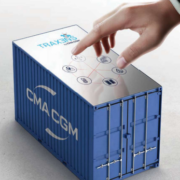The value of openness in transport data
The value of openness is best demonstrated by arguably the biggest technological revolution of modern times – the internet. Had the early technical pioneers at ARPANET and CERN who developed the technical protocols that make the internet – and the Worldwide Web that it underpins – kept them proprietary, the internet as we know it would not exist. Giles Bailey, CEO & Director of International Relations at TravelSpirit, James Gleave, Founder and Director of Transport Futures, and Beate Kubitz, COO of TravelSpirit, explain why transport companies now need to do the same, or risk cutting off channels to potentially industry-changing innovation.
Imagine that your access to the vast services and content of the internet was entirely dependent on which browser you used, and that each one required you to hand over your personal and financial information. This might mean that you could only access your email through Firefox, your bank through Chrome, Facebook and Twitter through Safari, etc. Following a link to an outside site would require you to download and register a new browser – one that, more often than not, does not work in most geographic locations. Under these conditions, whole swathes of the open internet as we know it would be unavailable, unfindable and unusable.
This is the sort of ‘closed future’ that the TravelSpirit Foundation seeks to combat by championing a vision for MaaS that is universal and accessible to all people, regardless of their location or destination.
We are advocating an ‘Open Internet of Mobility’, a framework that does not seek to define the solution to be used but, like the internet, defines a common ruleset and governance structure to challenge the drift into the closed ecosystems that we have today. This way, regardless of the technologies deployed – such as blockchain and the Internet of Things – the ecosystem is able to support interoperability, be trustworthy for its participants, and reduce costs and network latency for providers.
Data is critical
Data is increasingly driving innovation in transport, including MaaS. When paper tickets were purchased, operators could collect data showing revenue and approximate usage, but this only represented an approximate picture of network travel.
This scenario is now changing rapidly, with the initiative taken by non-transport actors to take big data feeds and analyse them. On the roads, for example, a number of organisations take data and provide precise network status overviews. For instance, Google is able to determine traffic speed and density from mobile phone positions along routes. In dense urban areas, transport planners such as CityMapper have an overview of transport generated by combining their own user data (collected when people request and navigate public transport routes) with transport operator service feeds to gain city-wide pictures of capacity and demand.
Now, a variety of innovative mobility operators are using big data to provide services. They often use the extraordinarily detailed location data available from mobile phone operating systems in conjunction with their customer requests, to provide services and also predict overall demand and shape services over the longer term. For instance, location data in hailing an Uber is essential to the service provision for both customer and driver – plus map and traffic data enables price and journey length prediction and navigation. Whilst Uber has probably the highest profile – and the most controversy regarding the amount of data it collects on customers – it is not the only innovator that depends on data and data analysis in order to provide a service. From on-demand bus services to bike-share schemes, user data is combined with usage data, mapping and traffic tools to provide and shape services. The details of terms and conditions and privacy policies frame how these datasets are limited to service offerings, or potentially enabled for marketing and wider commercial partnerships.
The emergence of these new transport operators, as well as wider trends in services across society, makes the development of more personalised services through apps and improved data feeds inevitable.
It’s about collaboration
Many of these new technologies and business models are clearly already in place. An example of this is the ‘Contactless Transit Framework’ from the UK Cards Association, which contains three models for enabling the development of contactless payment systems on public transport networks across the UK. The system is being adopted by all major public transport operators by 2025.
However, with few exceptions, no culture of collaboration currently exists to allow MaaS and other new mobility services to be delivered systemically. The message from many transport operators (private and public) to customers is that the best value can be gained from travelling primarily on their services and buying from them directly. Few inform customers about alternative service options provided by other operators and modes, or even if a customer has made the best decision by purchasing from them directly. Furthermore, most operators make no attempt to link a range of services to provide the best overall journey for the traveller. For example, research by the Office of Rail and Road in 2015 identified that one in five rail customers purchased the wrong ticket due to a lack of information on the tickets available for their journey.
Open data is showing the way
Open data has already shown that there is potentially significant public and private benefit for mobility providers. The demand for transport data is most ably demonstrated by transport datasets being the top four most downloaded datasets from the UK Government’s data website since it began service in 2012. The UK is known for its innovation and excellence in openness, with the ‘Open Data Barometer’ ranking the UK’s public transport data as among the most open in the world.
Within major cities across the UK, particularly those with smart city capabilities or aspirations, excellent work has been undertaken to make publicly-owned transport data, such as car park locations, open as standard. However, practice is far from uniform or sufficiently thorough, with many local authorities not publishing any transport data at all. Local authorities should be accelerating the publication of transport datasets.
The delivery of transport apps, powered by open data provided by Transport for London, has also demonstrated significant impacts of open data. Doing so leads to a virtuous circle of benefits, which Deloitte has estimated to be around £130 million per annum through wider job creation, saved journey time, and savings for Transport for London itself. After all, why develop a bespoke solution when open source can help you do it?
Read the full article on the Intelligent Transport website.









